Authentic Mainland Greece: Xylokastro-Evrostini (2024)
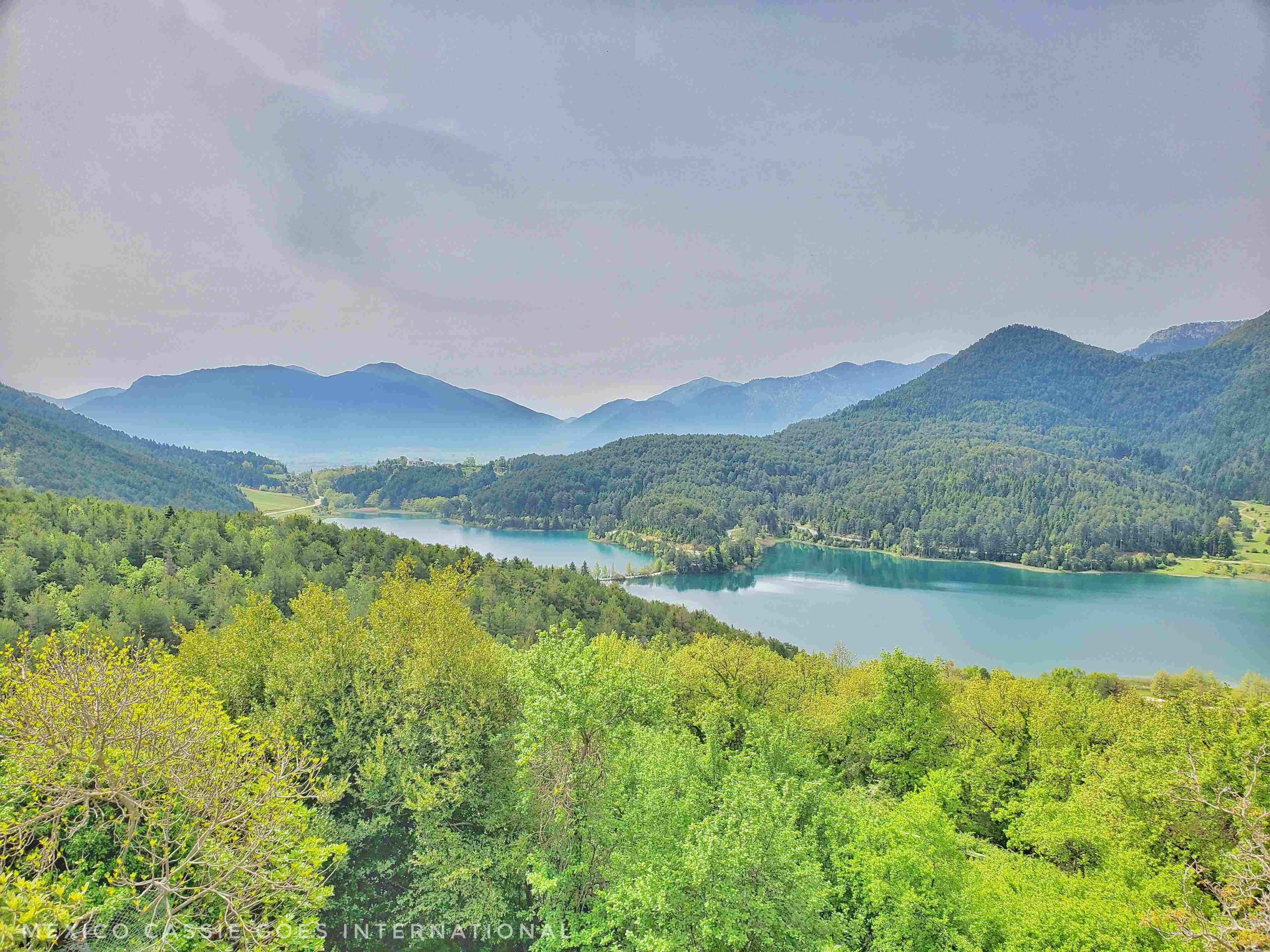
If you’re thinking about a vacation in Greece this year but you’re worried about crowds of tourists and just following the tourist trail then it’s time to get out your map and consider your options in mainland Greece. I might live in Andalucia, Spain, and therefore have easy access to gorgeous beaches and mountain towns but I am still wowed by Greek villages, beaches and food (always with the food).
Remember, Greece is so much more than the (undeniably gorgeous) Greek islands. The Greek mainland is well worth exploring for its history, nature, food and, of course, local culture. You’ll be astounded by the beauty you’ll find exploring mainland Greece.
In this article I’m going to take you on a trip from the Greek capital city of Athens to the north of the Peloponnese region where ancient Greece meets Byzantine Greece meets modern Greece.
Let’s go and explore the stunning region of Xylokastro-Evrostini in Corinth. It’s just two hours from Athens making it a perfect destination if you’re in Athens and want to see a little more of Greece.
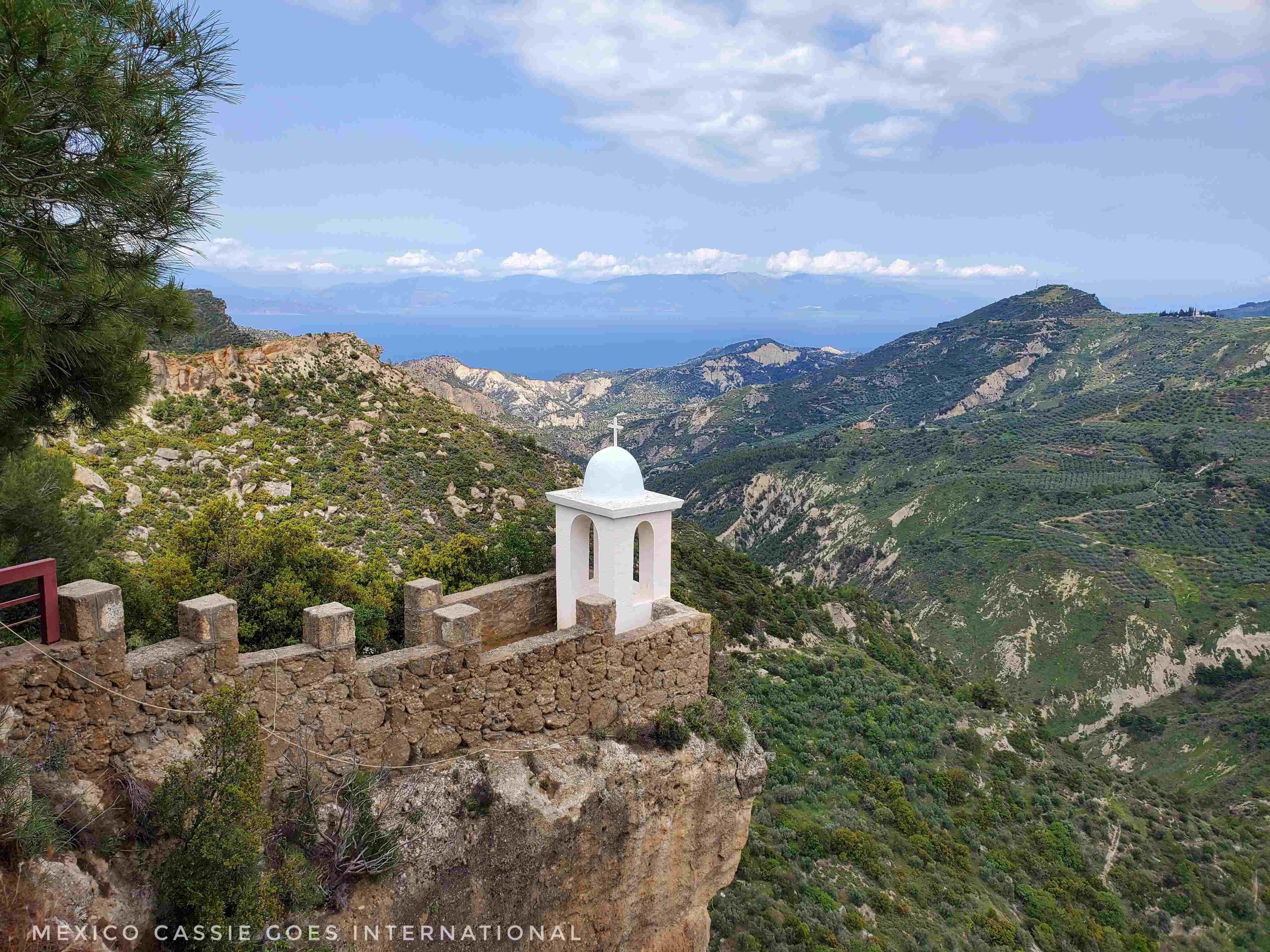
There may be affiliate links in this article. Should you click and make a purchase via one of these links I may make a small sum at no extra cost to you. Thank you for supporting my blog!
Let’s be clear right before we start: Xylokastro-Evrostini may be a new and unheard-of destination to us visitors but the Greeks, particularly the Athenians absolutely know and love this region. They go to ski in the winter, to frolic on the gorgeous Peloponnese beaches in the summer and they’re at the lakes all year round.
If you want to enjoy Greece like the Greeks, do not miss Xylokastro-Evrostini!
Are you ready? Then let’s go and explore Xylokastro-Evrostini and find all the best things to do there!
Mainland Greece: Destination Xylokastro-Evrostini
The region of Xylokastro-Evrostini on mainland Greece is a true hidden gem for foreign visitors. In this small area in the north of the Peloponnese, you can visit both mountains and the beach on the same day since from one, the other is easily reachable in under an hour.
Getting to know Xylokastro-Evrostini is about immersing yourself in rural life, enjoying amazingly fresh food, experiencing incredible local wines, and appreciating the quieter pace of life we all yearn for.
Where is Xylokastro-Evrostini?
Xylokastro-Evrostini is a small municipality in Corinth on the Peloponnese Peninsula of mainland Greece. It’s a great destination for day and weekend trips from Athens or as part of a longer vacation to the Peloponnese peninsula.
The main town of the municipality, Xlyokastro sits on the Gulf of Corinth and is an easy ninety-minute drive from central Athens. While many visitors to Greece picture themselves on the Aegean Sea, the Gulf of Corinth is also quietly spectacular and should not be dismissed.
How to Visit Xylokastro-Evrostini
As noted above, Xylokastro-Evrostini is just a short drive from the gorgeous city of Athens and is popular with locals for a weekend excursion. Why not follow local advice and take a weekend trip here too?
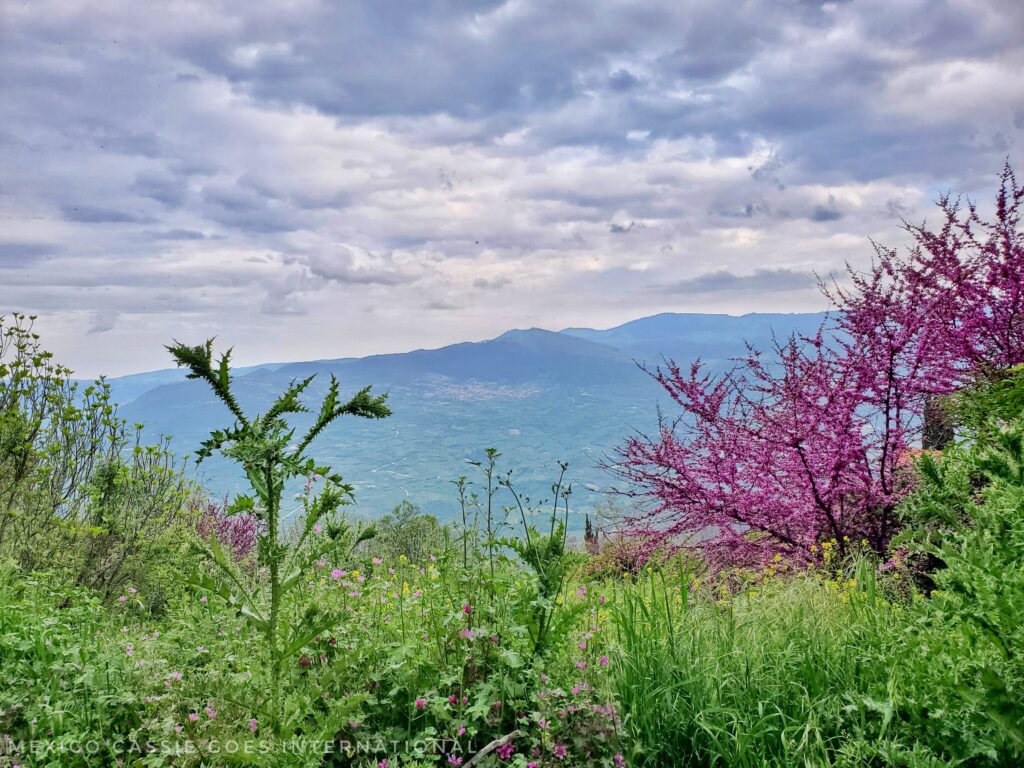
- The airport and Piraeus port are an easy ninety minutes from the region, so whether you’re coming from abroad, from Athens, or even after taking a cruise around the Greek islands, it’s easy to get here.
- The drive from Athens takes either the new highway (number 8) or the old national road for a more scenic route through coastal villages.
- If you’re exploring the whole Peloponnese Peninsula, then Xlyokastro-Evrostini in the north of the peninsula makes a great stop.
- It’s just three hours from the southern Peloponnese city of Kalamata where there is also an airport.
- The easiest way to reach the region is by renting a car and driving yourself but there are regular buses from Kifissos Station in northern Athens and from Kalamata in southern Peloponnese.
Top Tip: As you drive from Athens into the Peloponnese, you’ll drive over the Isthmus Bridge and one end of the Isthmus Canal (also known as the Corinth Canal), which is pretty cool. You’ll see signs for bungy jumping experiences all along the side of the road, so if that’s your bag take a break here to hurl yourself into an abyss.
Getting Around Xylokastro-Evrostini
Self-driving: the roads of Xylokastro-Evrostini are well-maintained and perfectly safe for a road trip. Hiring a car is the easiest way to get around the region as you’re not reliant on schedules and you can be more free with planning.
Bus: If you’re into slow travel and have the time then local buses make a great option for exploring the coastal and mountainous areas. Check the Corinthian Bus Company website for details.
Taxi: In the main towns of Xylokastro and Derveni you can find taxi services without a problem. In some of the smaller villages, you may struggle to find a cab service.
Where to stay in Xylokastro-Evrostini
Two great locations for basing yourself are the beach town of Xylokastro, and the mountain village of Trikala.
Exploring Mainland Greece: Xylokastro
Visit the beach town of Xylokastro if you enjoy relaxing on the beach, watersports, fishing and summertime nightlife. If you enjoy walking then Pefkias Forest, a rare Aleppo Pine forest bordering the ocean will take your breath away. While many might look at taking a train to Thessaloniki from Athens (it’s actually on five hours), others look in the other direction, towards the gentle beaches of Xylokastro.
Walk in Pefkias Beach-Forest
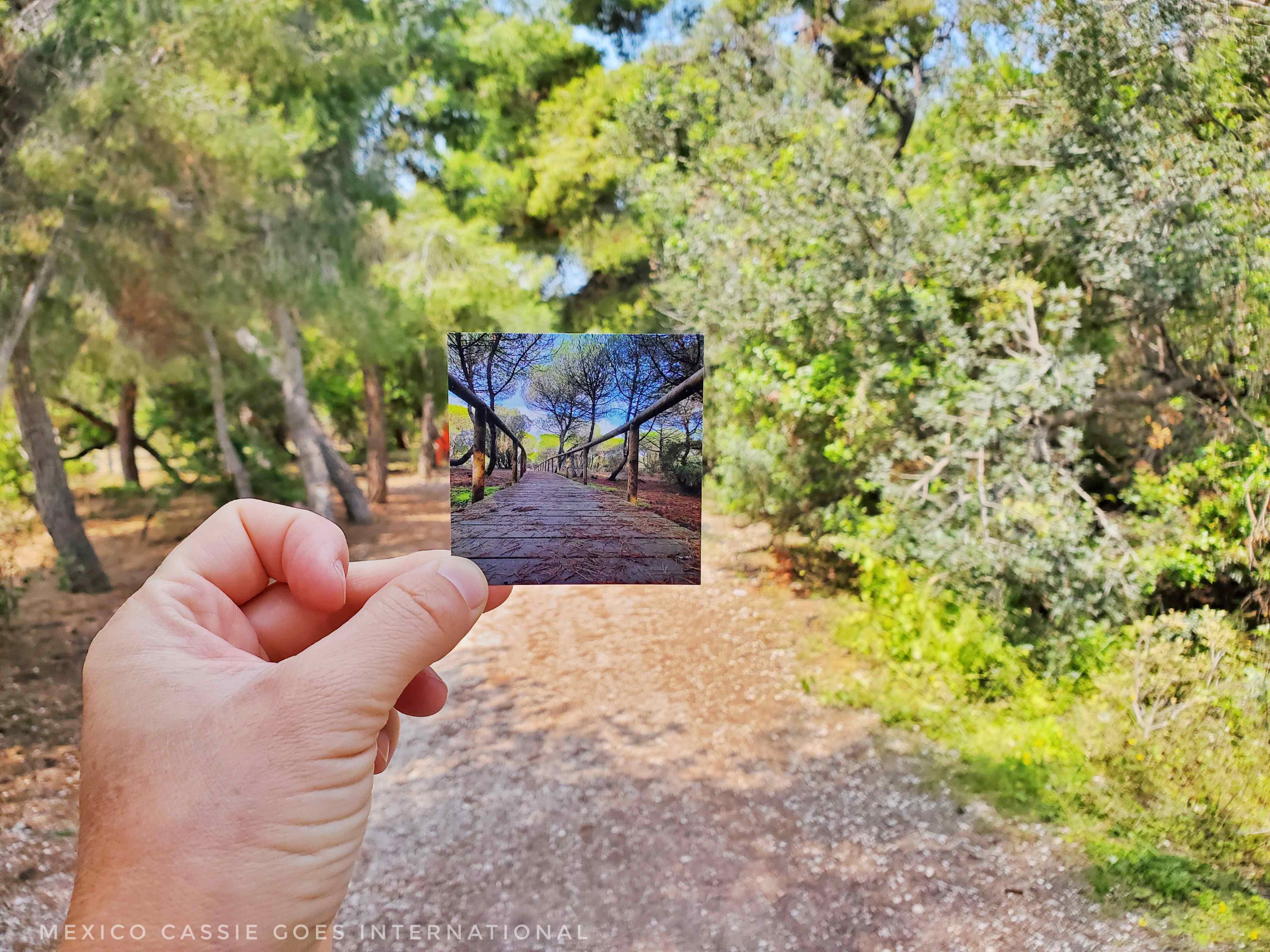
While in my old home Mexico you can enjoy palm-fringed beaches, here in Xylokastro it’s pine forest-fringed beaches (just as it is at my favourite beach in Huelva Province, Andalucía). As you stroll through the forest there are glimpses of the sea and distant mountains that will just take your breath away. There are also cute little cafes and bars where you can grab a drink or snack and while away the hours with locals.
Did You Know? In the mid-19th century King Otto and Queen Amelia, while touring their lands stopped in Xylokastro. Amelia was so taken with the forest and so distraught to see locals felling trees that she banned them from cutting down more and this is why the forest remains today.
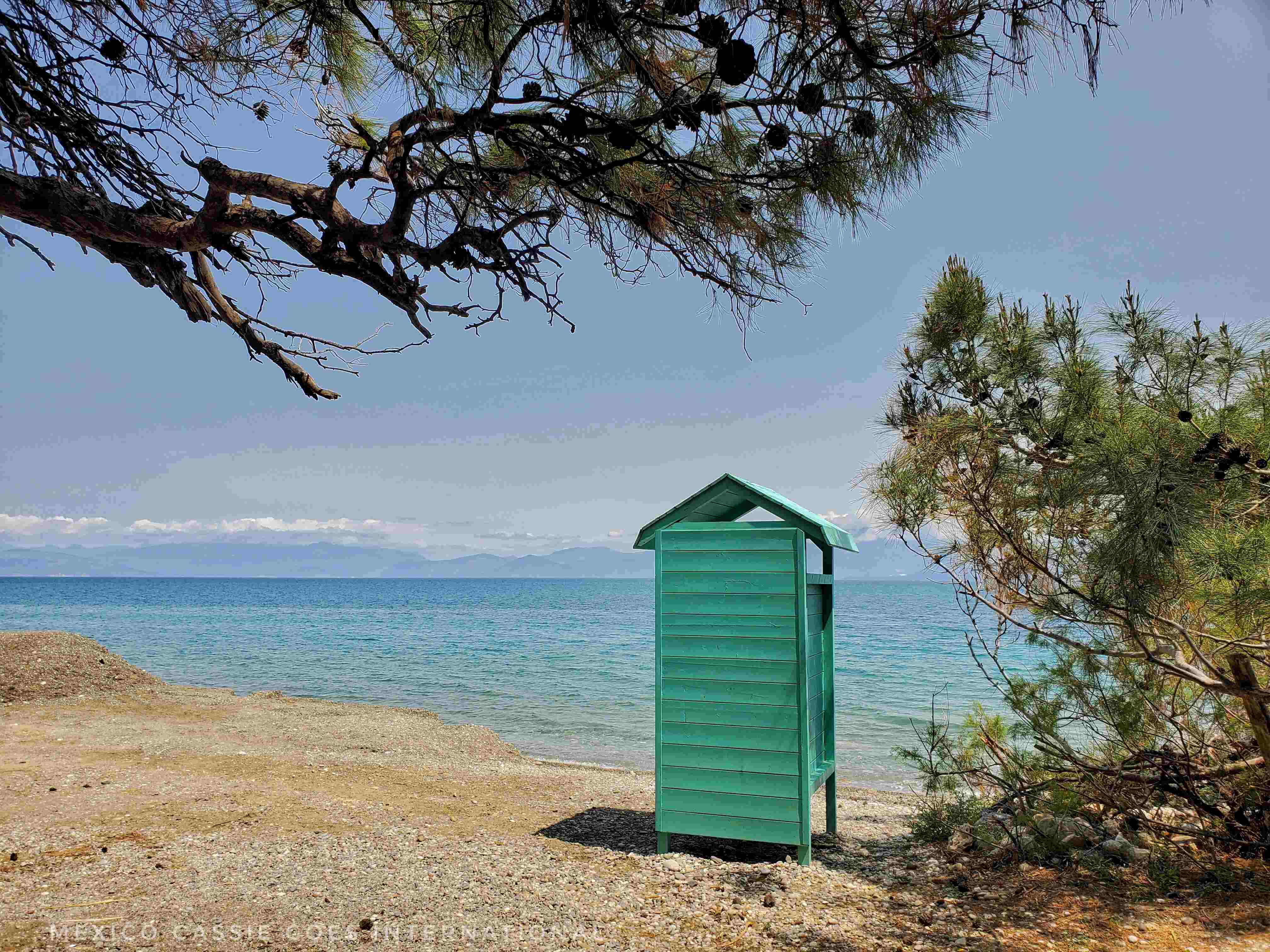
House of Angelos Sikelionos
In Xylokastro, you can visit the house of Angelos Sikelinos, a famous Greek poet (located on the grounds of the Sikyon Resort Hotel – you can actually book a meal at the restaurant in this house via the hotel).
Folklore Museum
There is a very small and cute folklore museum that aims to preserve the history and culture of Xlyokastro. A visit here won’t take long but it’s definitely worth a quick look if you are interested in Greek culture. Note: it is planned to move the museum into the house of Prime Minister Tsaldaris (see below).
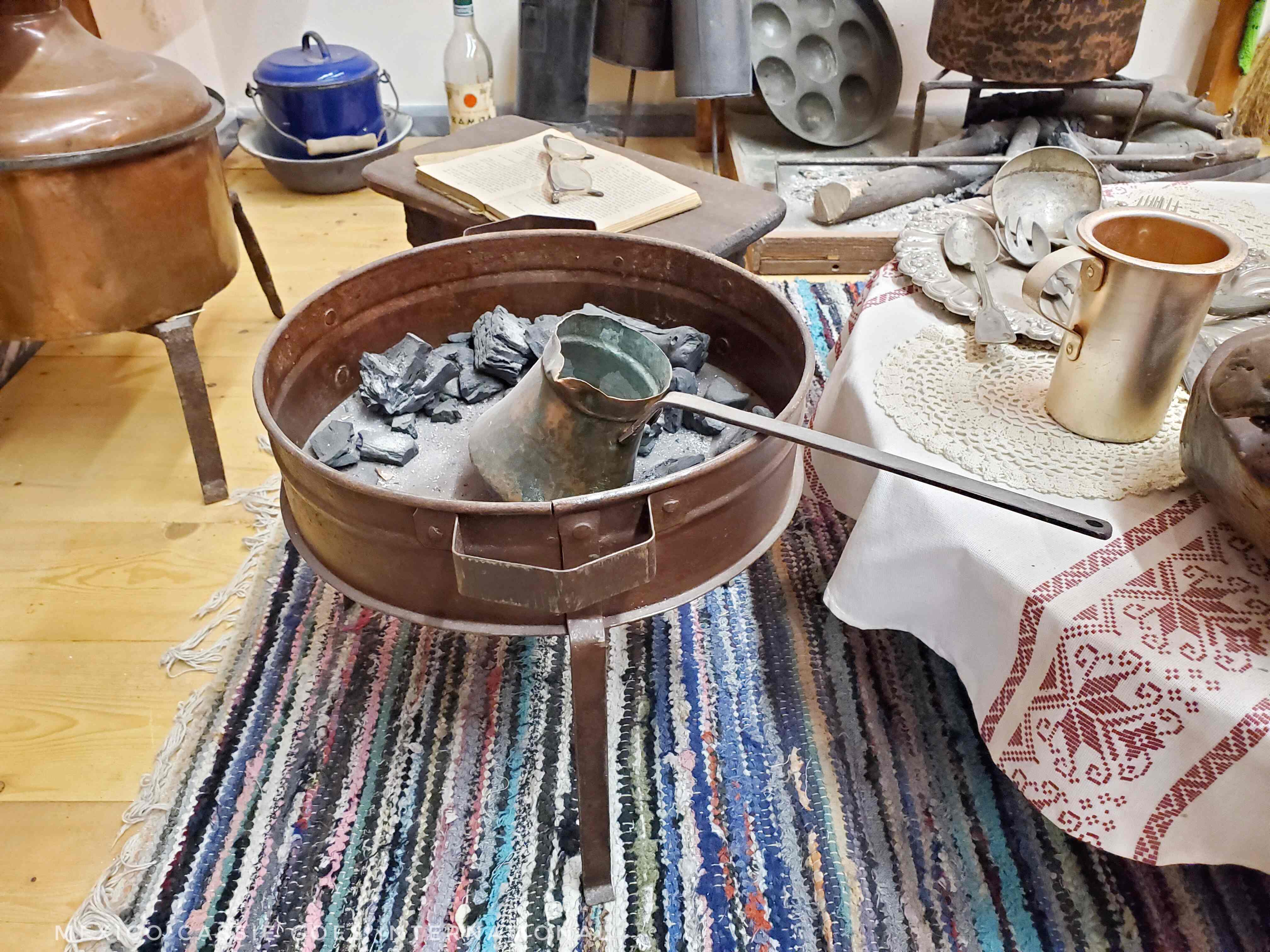
Kamari Village
Just down the road from Xylokastro is Kamari village where you can see the house in which Prime Minister Tsaldaris was born. As noted above, at some point this will house the Folklore Museum. For now, though it’s a quick stop to admire the beach view and the house.
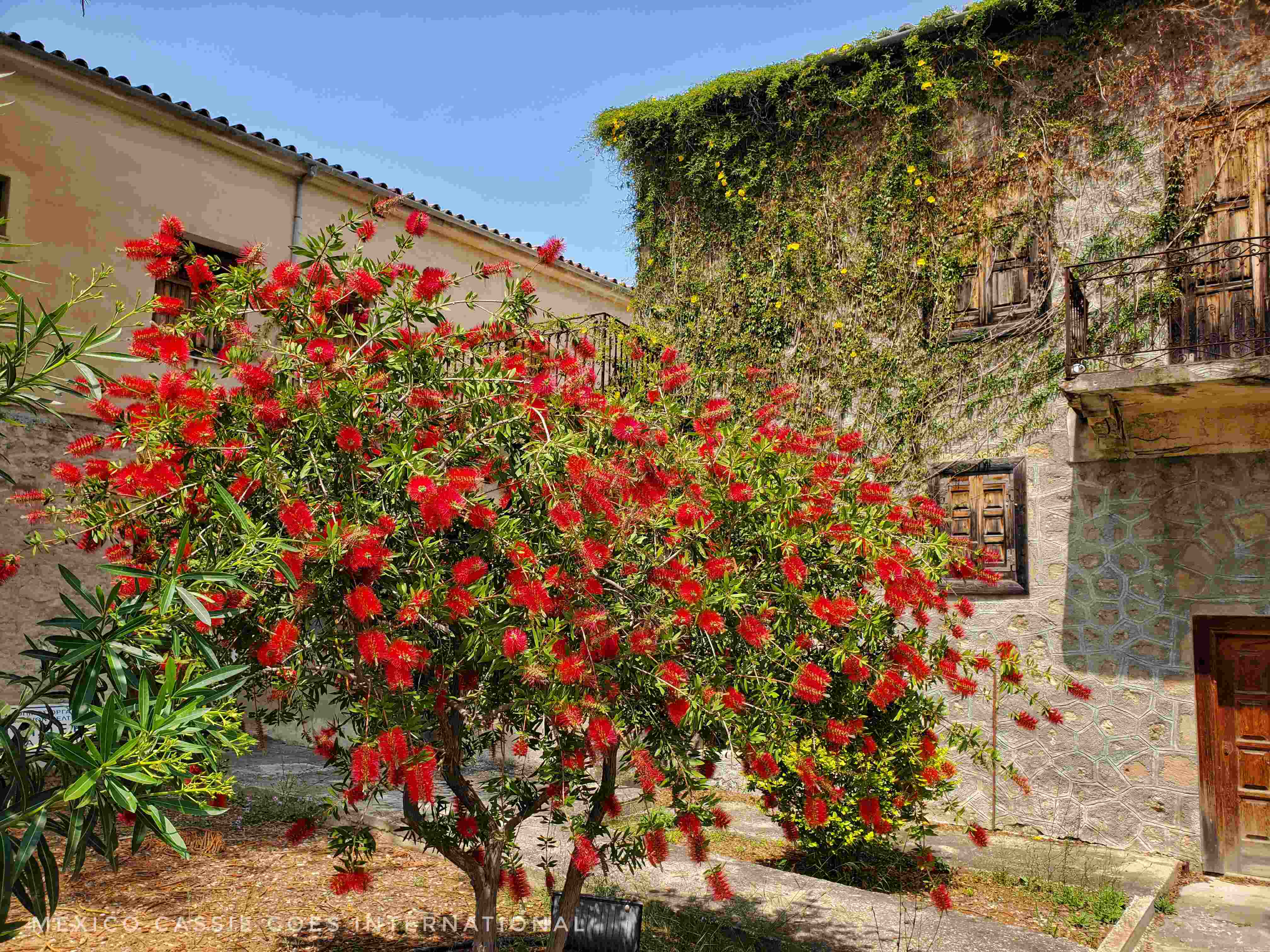
Where to Stay in Xylokastro
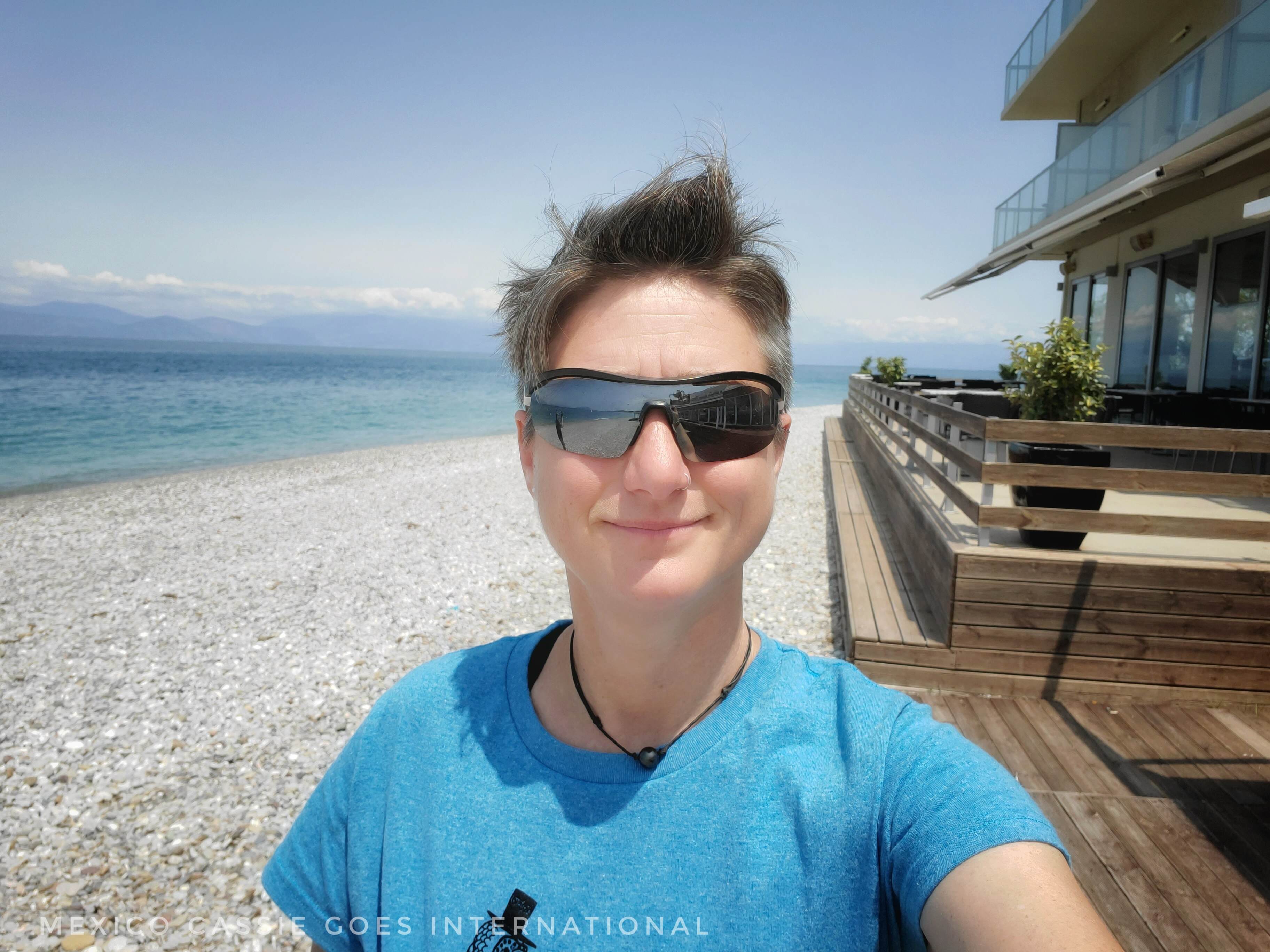
Can you imagine yourself in the reflection of my glasses?
Right on the Gulf of Corinth beach is the gorgeous hotel resort of Sikyon Coast Resort, where Greeks love to stay. The views are gorgeous but for me it is the quality of the food that makes this hotel stand out. When I visited I was fortunate enough to meet the chef who explained his passion for fresh ingredients and for modernising traditional Greek recipes. The hotel also has a swimming pool and spa.
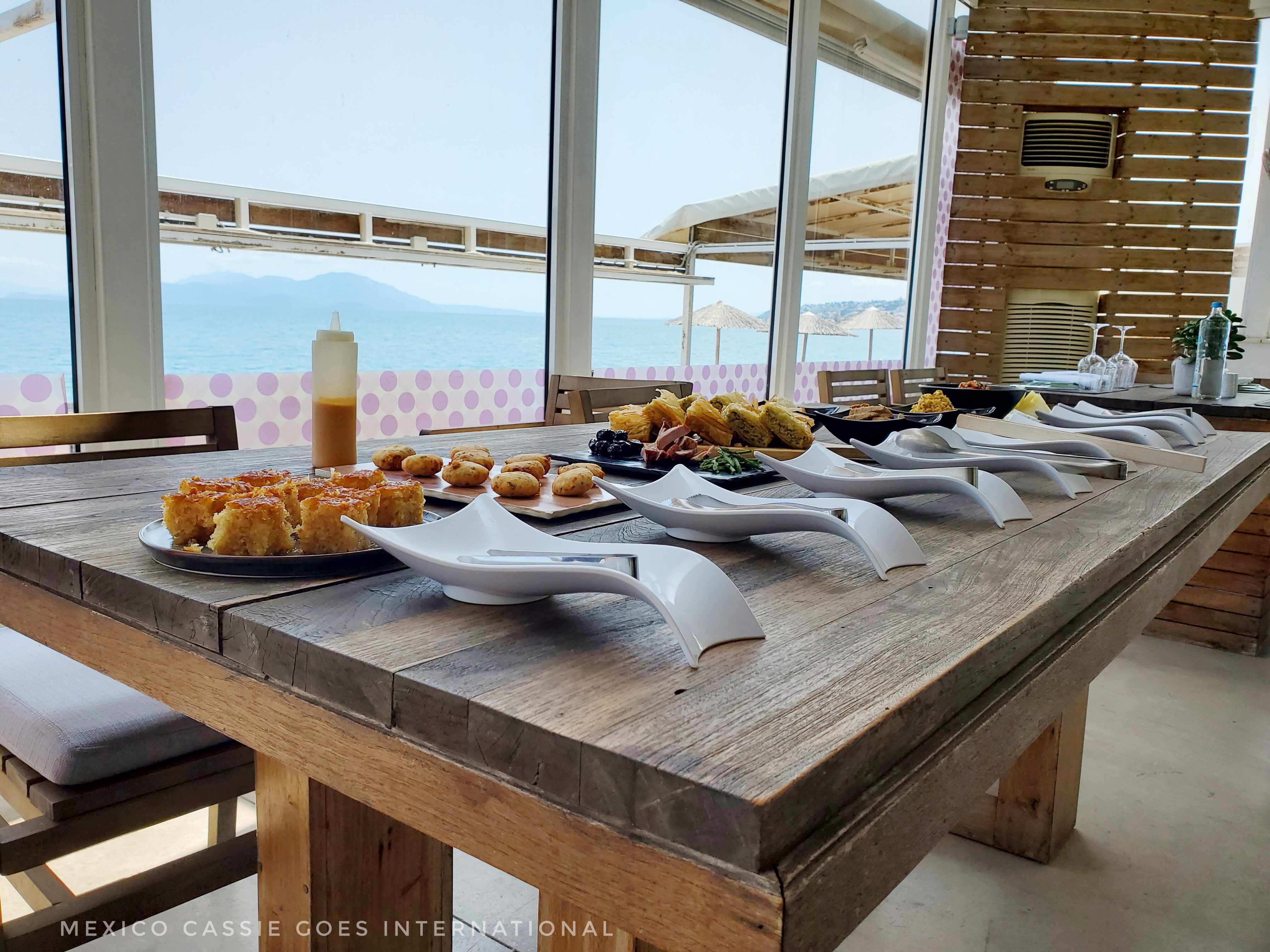
Exploring Mainland Greece: Trikala
Trikiala is also a very well-known spot for Greeks as it’s a mountain ski lodge town. In winter it’s full of locals visiting the snowy peaks of Mount Kyllini (also known as Mt Ziria) but the rest of the year it is much quieter. Visiting Trikala out of season offers peace, tranquility and extremely reasonably priced accommodation in a gorgeous village with astoundingly good restaurants. Honestly, I was shocked by the quality of every single meal I ate in Trikala.
Trikala, now a quiet village, was once an important cultural hub; it played its part in the 1821 Revolution and in defining the Greek tourist market. In the 1920s, thanks to its fresh and clean air, Trikala was considered to have healing properties for TB sufferers, and as such people were sent here to recuperate throughout the year.
As time passed, and the need for TB cures declined, Trikala became better known for its winter activities than for its summer fun but I think it’s time to challenge this and start spending time in Trikala all year round (but please do lots of activities or you’ll never recover from the amazing restaurants).
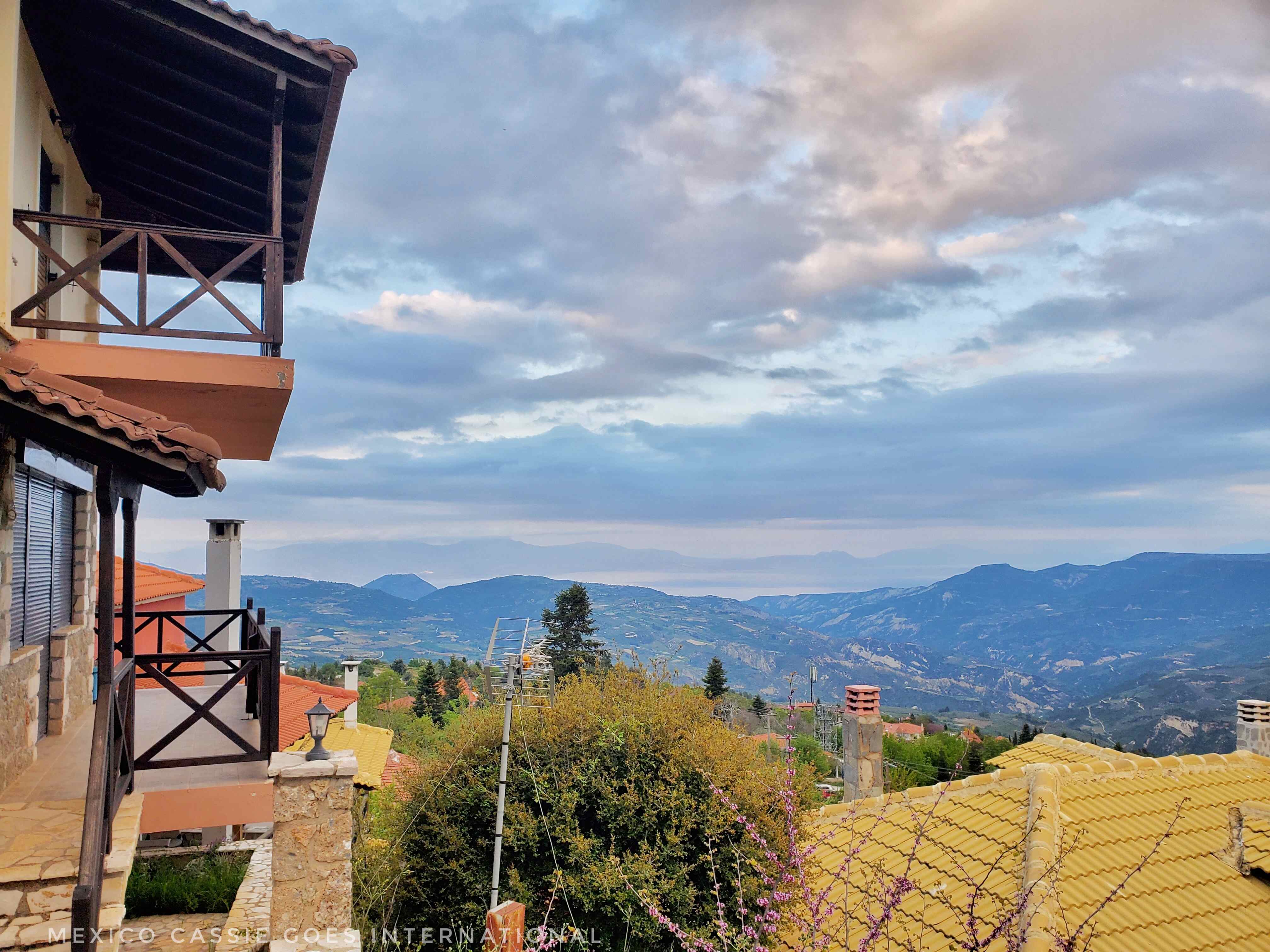
Triklala is a triptych-kinda village, seeing as how it’s actually located in three different places:
Upper Trikala – Ano Trikala. A few scattered guesthouses.
Mid-Trikala – Messaia Trikala – most guesthouses are found here.
Lower Trikala – Kato Trikala most residents live here and many of the restaurants are here.
Top Tip: If you’re searching for Trikala on a map, please be aware that there are two Trikalas in Greece. Here we’re discussing your visit to Trikala in Corinth on the Peloponnese Peninsula just two hours from Athens.
What to do in Trikala
Visit the Ski-Centre for Skiing and Other Activities
Did You Know? Mount Kyllini has eight peaks all over 2000m and is known locally as where the gods were born. It is said that Zeus and Maia gave birth to Hermes on this mountain. The mountain also housed sanctuaries including Myseon for Demetra and Kyros for Asclepius. The latter was one of the largest hospitals in Ancient Greece when the region was of utmost importance to the ancient Greeks. Between two of the peaks is the Flamburitsa Gorge, an area of natural beauty, abundant streams and trees. Mount Kyllini is protected by the Natura 2000 Network.
Ziria Ski Centre is located on Mount Kyllini and if you’re visiting in winter then this is the obvious place to begin your adventures. Here kids and beginners will enjoy skiing since the slope is nice and gentle. Even if you’re not interested in skiing, don’t miss out on visiting the centre since the views are stunning and there are other great winter activities including snow buggies and walking on icy Lake Dasiou on offer.
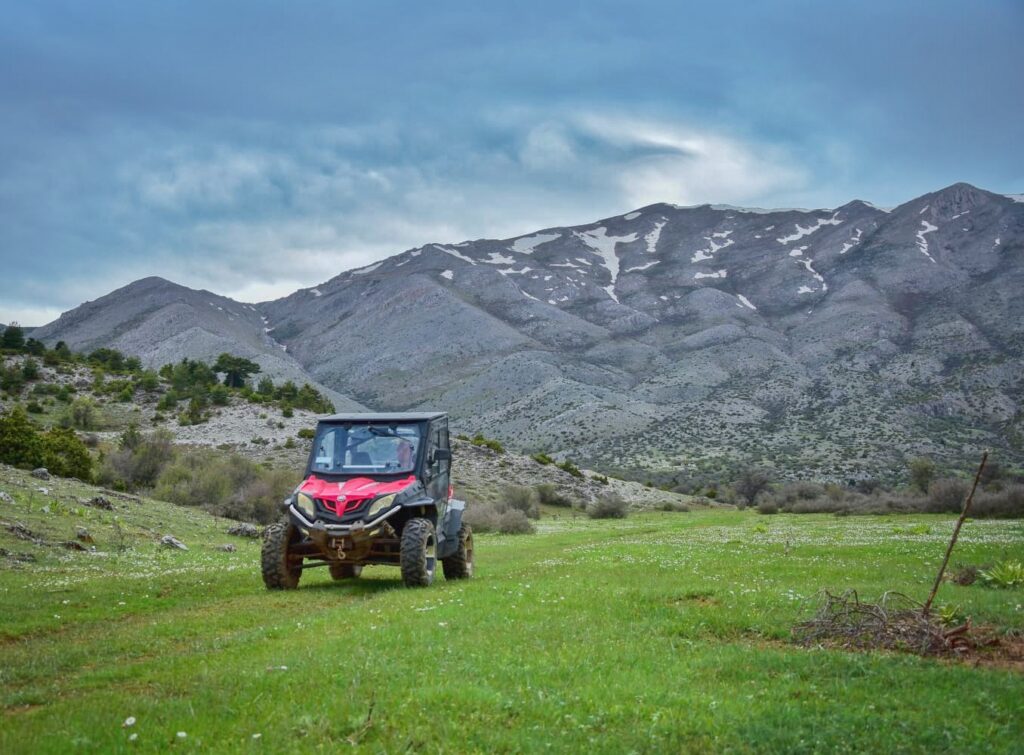
In the non-snowy months, this is a great spot for hiking, picnics, ATV fun, and more.
Can you believe it’s possible to go skiing just forty-five minutes from the beach?
Top Tip: Assume there will be snow in the mountains between late September – April most years.
Walking/Hiking
The ski-centre isn’t the only great location for walking or hiking in the area. Other options include:
- Walking between the three Trikalas
- Karya Village – this is a great base for walking and exploring
- Waterfalls around Trikala – for information on waterfalls in the area, contact Explore Ziria or ask in your guesthouse
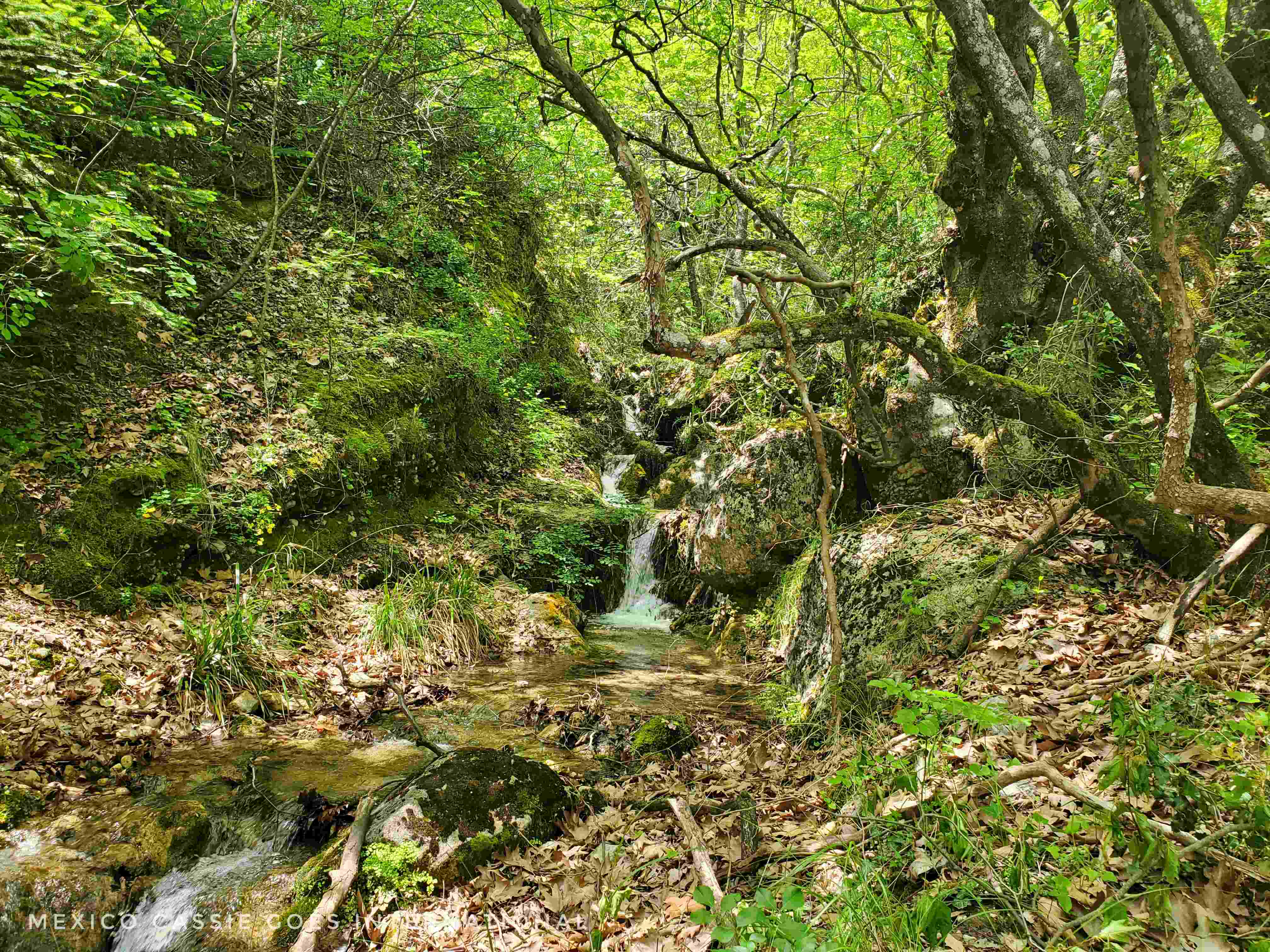
Horse Riding in Rethi
If you’re a horse enthusiast then you’re going to love this region because not only are there wild horses roaming the mountains (I saw plenty, they’re not elusive at all) but you can also explore the fields of Mt Ziria on horseback with Kentro Ippoasia Trikala.
There is a good cafe opposite, Fysi Ke On so when you’re done you can wash your hands and grab a snack before heading off.
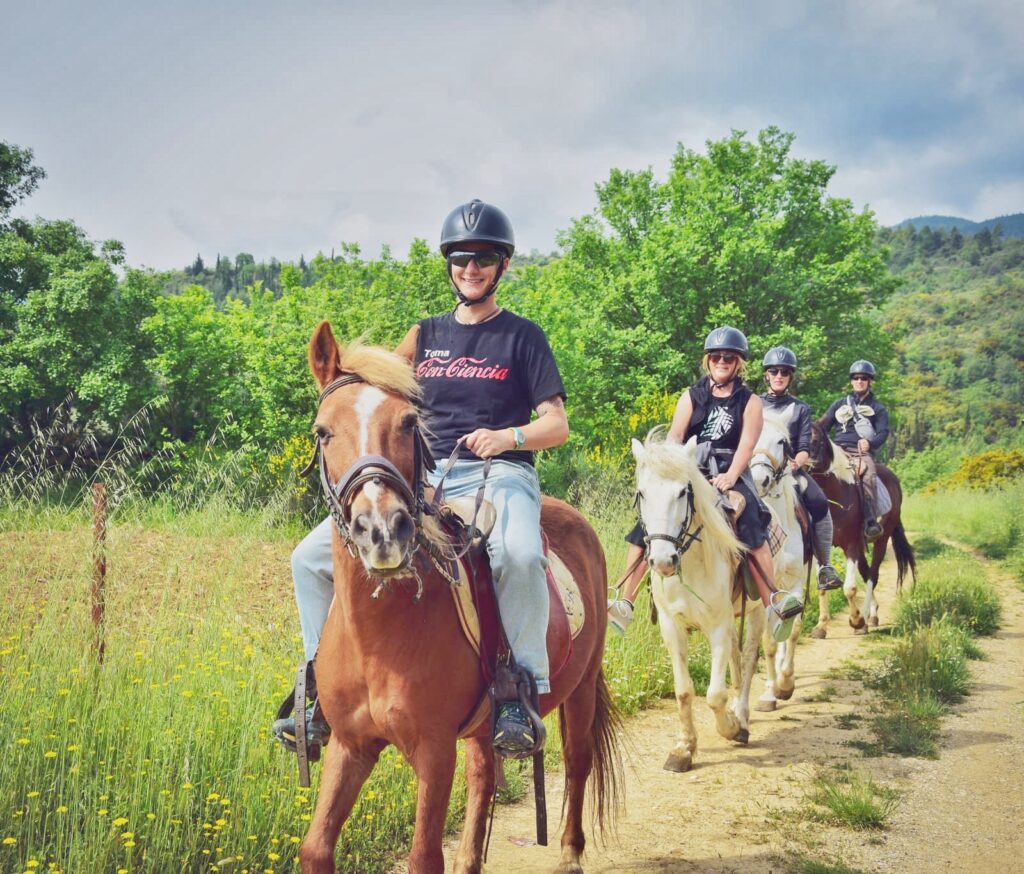
Culture
Cave of Hermes – Although this isn’t a tourist attraction it is visitable if you use Google Maps and are willing to hike. Who doesn’t want to say they have seen where a god was born?
Monastery of St Viassios – legend claims that in the eighth century, a wooden hagiography of St Vlassios was discovered hidden away in a cave and this discovery inspired the location of the temple. This particular monastery was not built in the eighth century but it is still pretty old, since it was built in the mid-17th-century.
The nuns are very welcoming and it’s possible when you visit to try nun-made spoon-sweet and coffee in the peaceful surroundings.
Where to Stay and Eat in Trikala
Where to Stay in Trikala
Wherever you stay in Trikala you will be treated to phenomenal views of the surrounding countryside.
Top Hotel Recommendations in Trikala
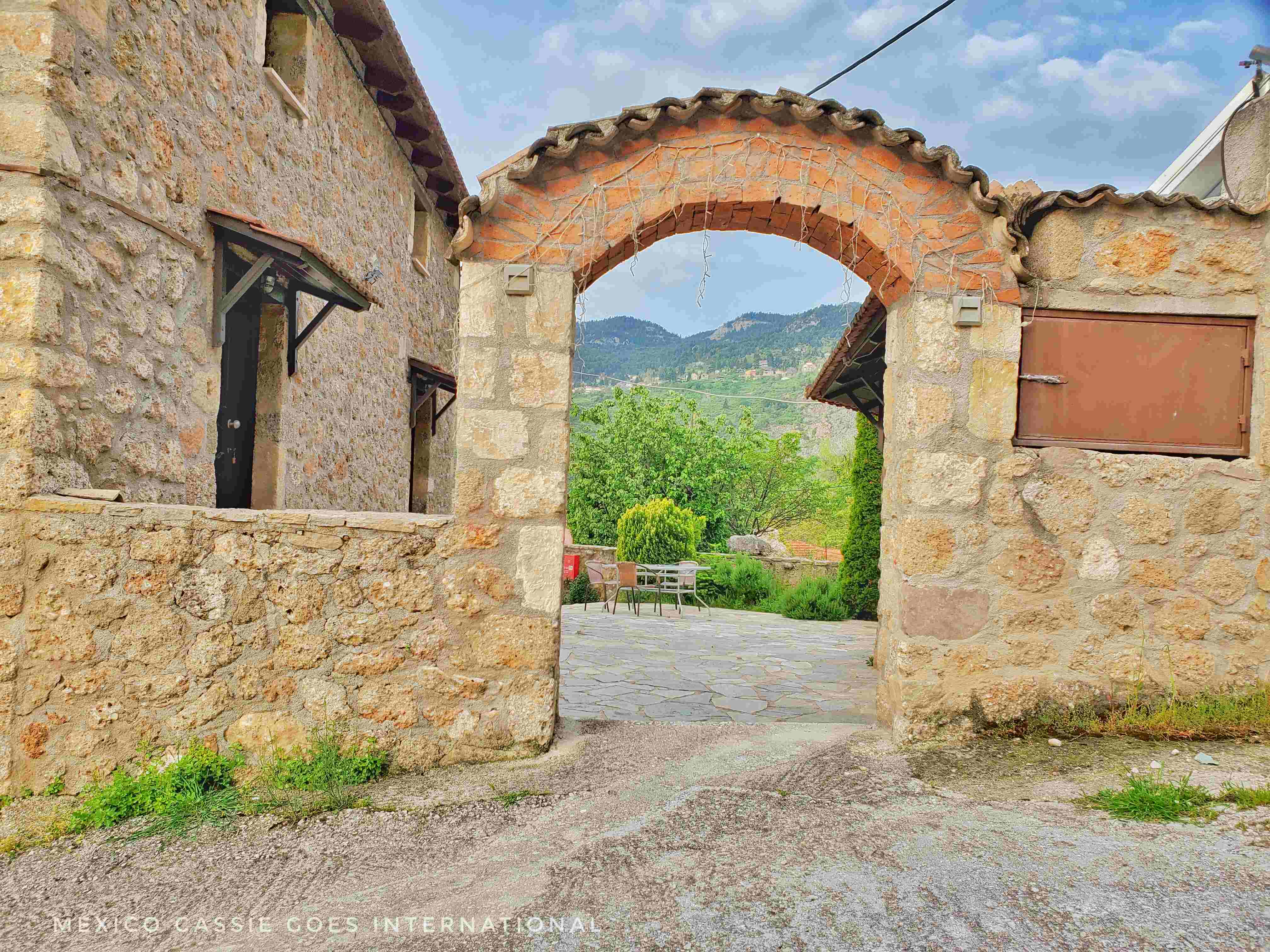
Where to Eat in Trikala
There is a plethora of really exceptional restaurants in Trikala. Here are a few to get the taste buds a tingling:
- Cafe Al Favitario – Lower Trikala, lovely terrace, great food and very friendly staff.
- Kibotos – Upper Trikala. A small shop with a coffee shop attached.
- Dekleris – Upper Trikala. Extremely tasty food.
- Katafygio – Mid Trikala. Big terrace. Extremely popular tavern that creates imaginative and dishes. Be sure to book your table.
- Taverna Platanos – Lower Trikala. Served great food including one of the best rice and mushroom dishes I’ve ever had.
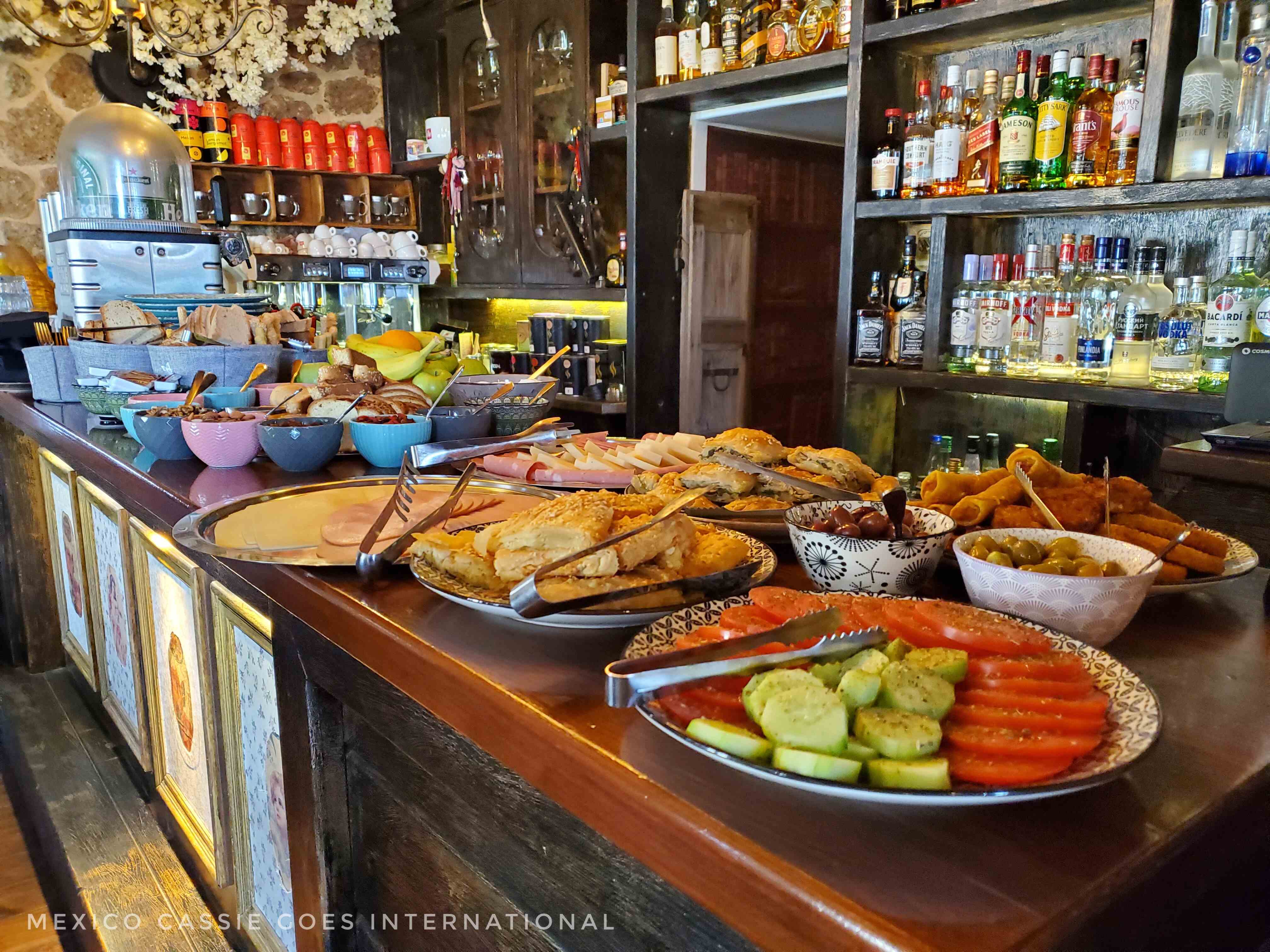
Exploring Mainland Greece: Evrostina
Evrostina is one of many small mountain villages you’ll find scattered across the region. This one is an utterly gorgeous thirty-minute drive into the mountains from Xylokastro. Evrostina might not be your primary vacation destination but it’s well worth visiting for an afternoon when you’re exploring the region.
Note: you may see Evrostina referred to also by the name Zaholi.
What to do in Evrostina
Visit Byzantine Churches
Panagia Katafygiotissa (Holy Mary of the Shelters)
This Byzantine church was built in 1782 and is today seen as a monument to the strength and determination of locals who used it as a shelter against the persecution of the conquering Turks. The church complex was built deep into the mountainside and as such was a great hiding place. The church remained an active place of worship as well as a refuge until 1880 when the last remaining nun left.
In the 1980s the place was renovated and today the site’s astounding views make it a popular attraction for people visiting the area. Kids and adults like me will love exploring the tunnels and hidden chapels and its small white tower is a big win with photographers for the incredible views down to the turquoise waters of the Gulf of Corinth.
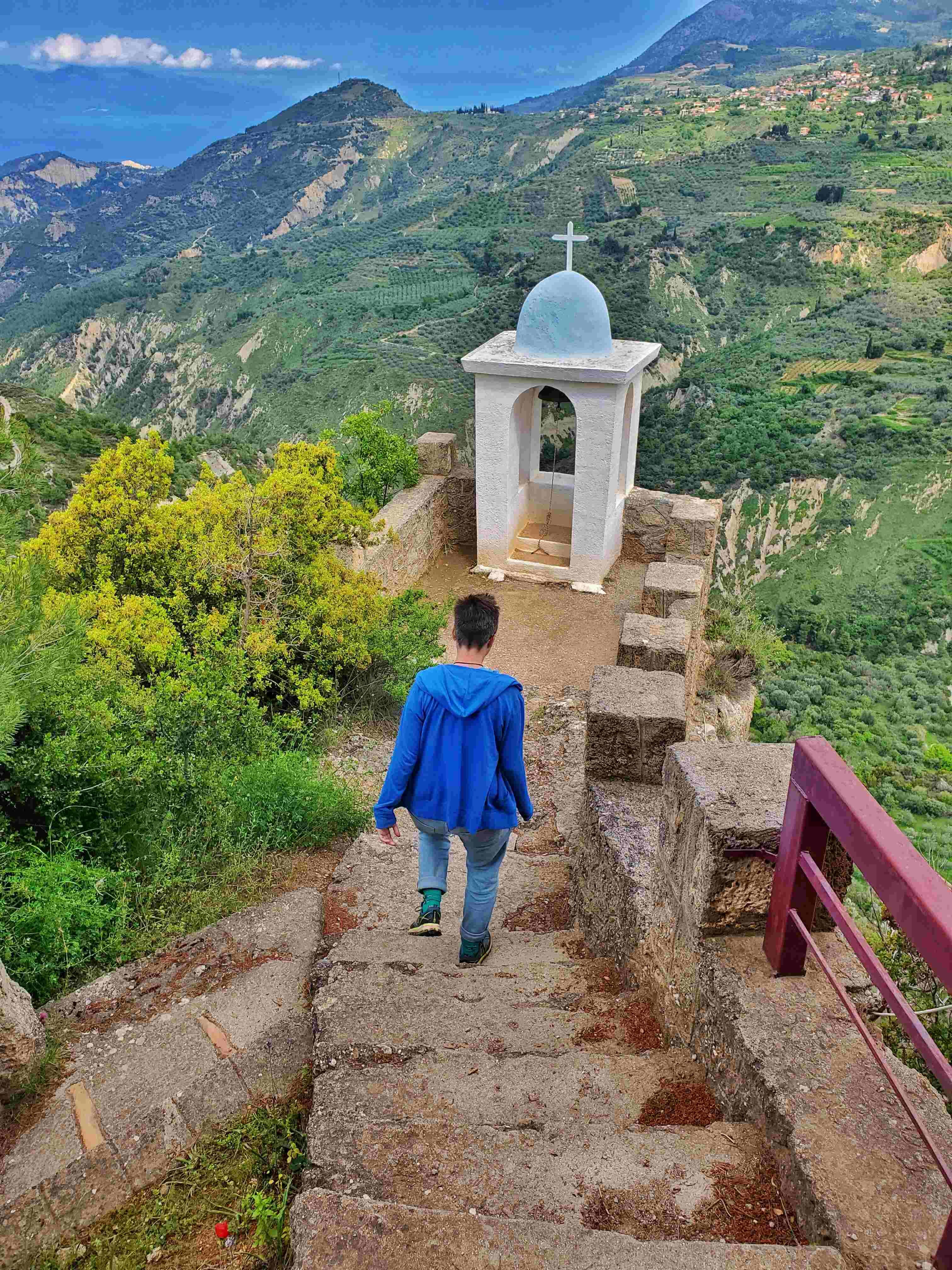
Agios Georgios (St George Church)
This church also represents Greek strength and determination: in the 18th century when Greece was under Turkish rule, the community of Evrostina was doing well but their small chapel wasn’t big enough to accommodate everyone. They went to the ruler in Corinth and requested permission to build a bigger church. Permission was granted but with the proviso that it was completed within forty days. If it was not then it would be demolished and a mosque would be built in its place. The locals accepted this challenge and worked without stopping and completed this magnificent building in just thirty-nine days.
The very first war council of the 1821 Revolution was held in this Church. Theodoros Kolokotronis (an important Greek leader) held a meeting here that inspired revolutionaries to fight for Greek independence.
The church has seventeen domes, which represent the twelve apostles, Jesus and the four evangelists (I looked this up, they’re Matthew, Mark, Luke and John – hah, now you’re getting travel info and religious information).
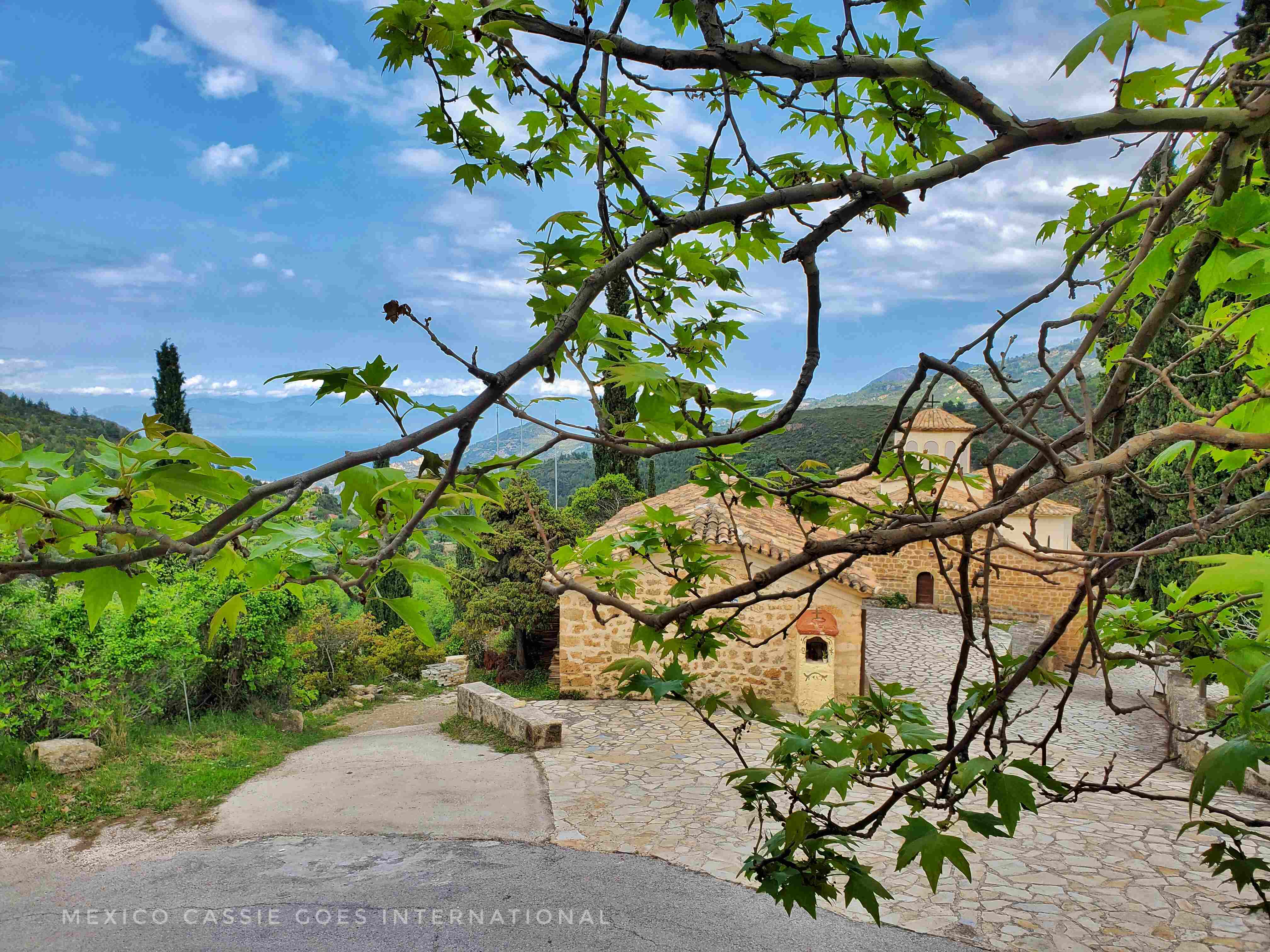
Did you know? Here, the entire iconostasis—in Eastern Christianity, this is a wall of religious paintings and icons— is made from a single cypress tree from a nearby village. According to local legend whomsoever cut down this tree would die. A brave old man offered to cut it down despite the curse. He did not die.
From this church take a walk down the many steep steps into the village of Evrostina where you will find delightful restaurants and cafes ready to welcome you.
Rema ton Mylon (Mill Stream)
Much like my hometown of Alcalá de Guadaíra in Andalucía, Spain, Evrostina used to be home to many mills, hence the name of this delightful small river that runs alongside the village.
It’s an utter delight to take a stroll alongside the trout-filled river, enjoying the fresh air, trees calling out for a hug and in spring, fields of poppies. Why not come armed with a picnic or better yet, support local businesses and pick up delicious dessert supplies from the local restaurant in which you’ve eaten lunch and take them down to the river.
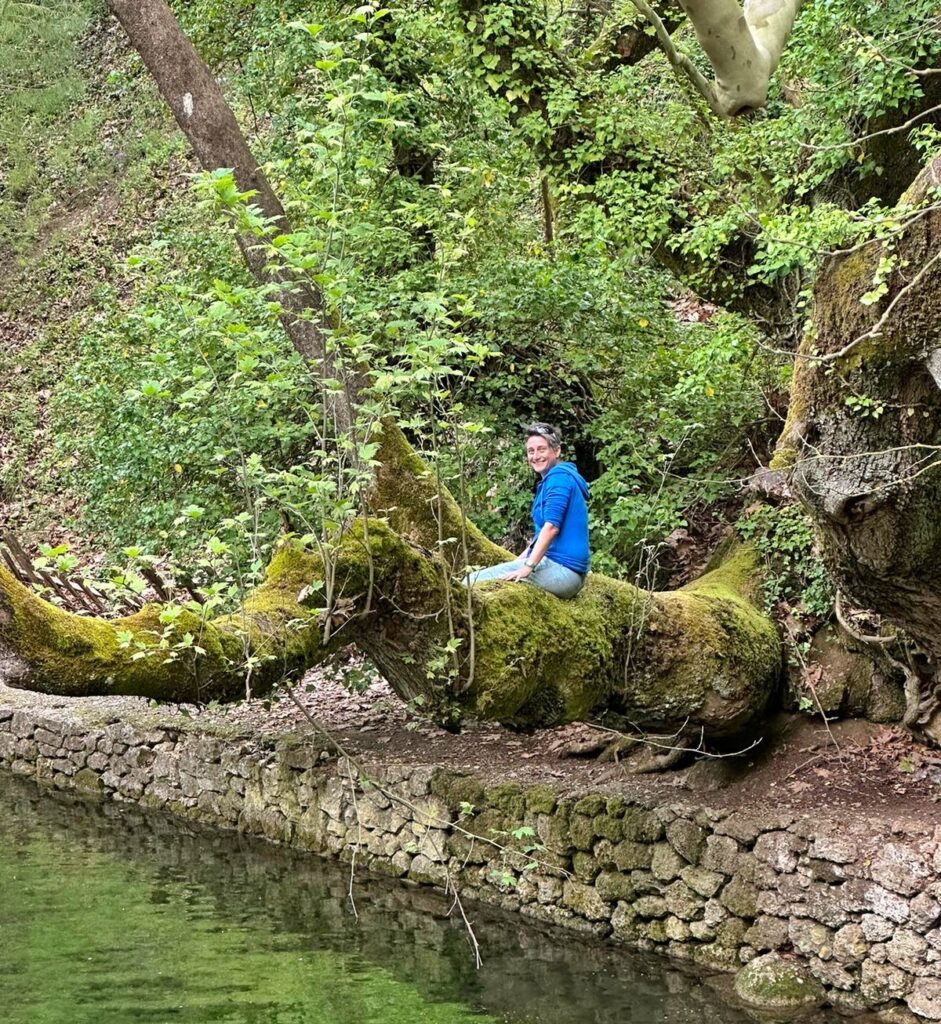
Exploring Mainland Greece: Lake Doxa and St Georgios
Lake Doxa
This is a great spot for exercise enthusiasts as well as for those who want to take it easy and enjoy a little shopping.
This twinkly mountain lake is actually an artificial lake but you’d never know from looking at it as it nestles comfortably surrounded by mountains. If you’re interested in water-based activities, talk to Explore Ziria as they own the kayaks, pedalos, and mountain bikes you see here. Apparently, this lake never freezes so it’s even possible to take the pedalos out in winter, which must be amazing!
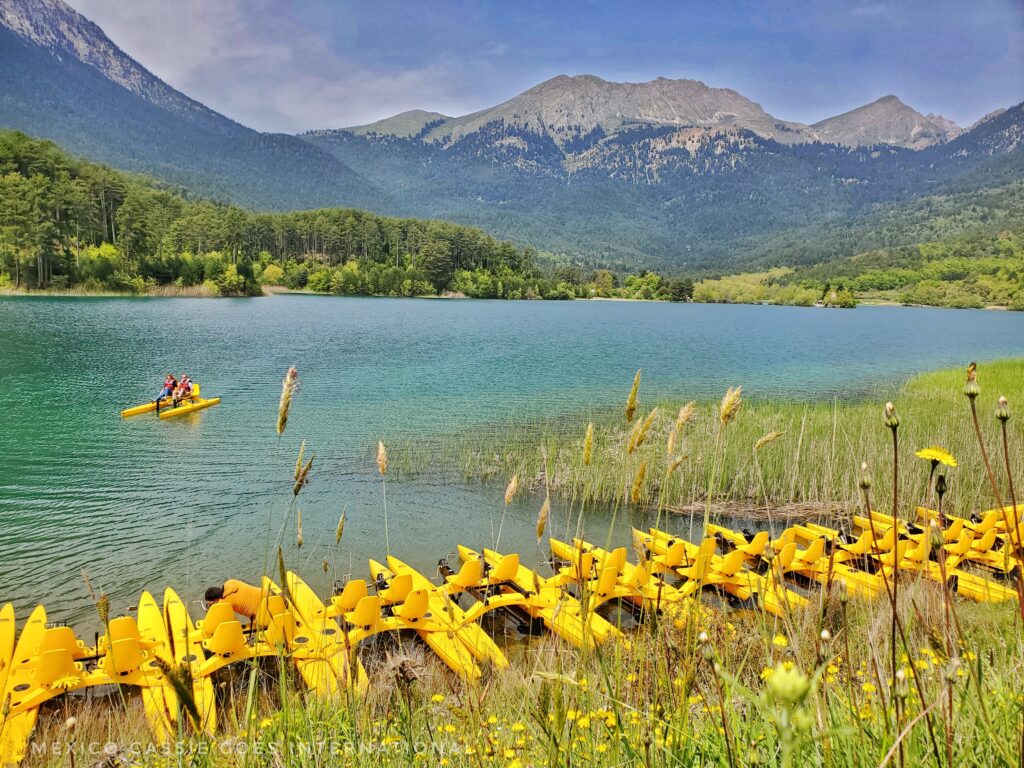
On the other side of the lake from the activities base (it’s easy to find as the lake is very navigable) you’ll see a little tower and here there’s a small informal market where you can pick up some very reasonably priced local delicacies including nuts, breads, fruits and honey. I had a grand old time chatting to the people on the stalls (I found a few who speak perfect English) and trying all their wares. Yum. I picked up local delicacy Corinth Raisins and some nuts to take home. Oh how I wanted to buy more but my bag was already overweight.
If you can’t get to Lake Doxa under your own steam, it’s possible to organise a tour from Athens. Many locals love to come from Athens to Lake Doxa for a day.
Did you know? The Corinth Raisin is a superfood akin to chia seeds. It is also known as the Zante Currant despite being a true raisin. The word “currant” probably derives from “Corinth” anyway. This humble food is one of the oldest known raisins in existence.
St Georgios Monastery
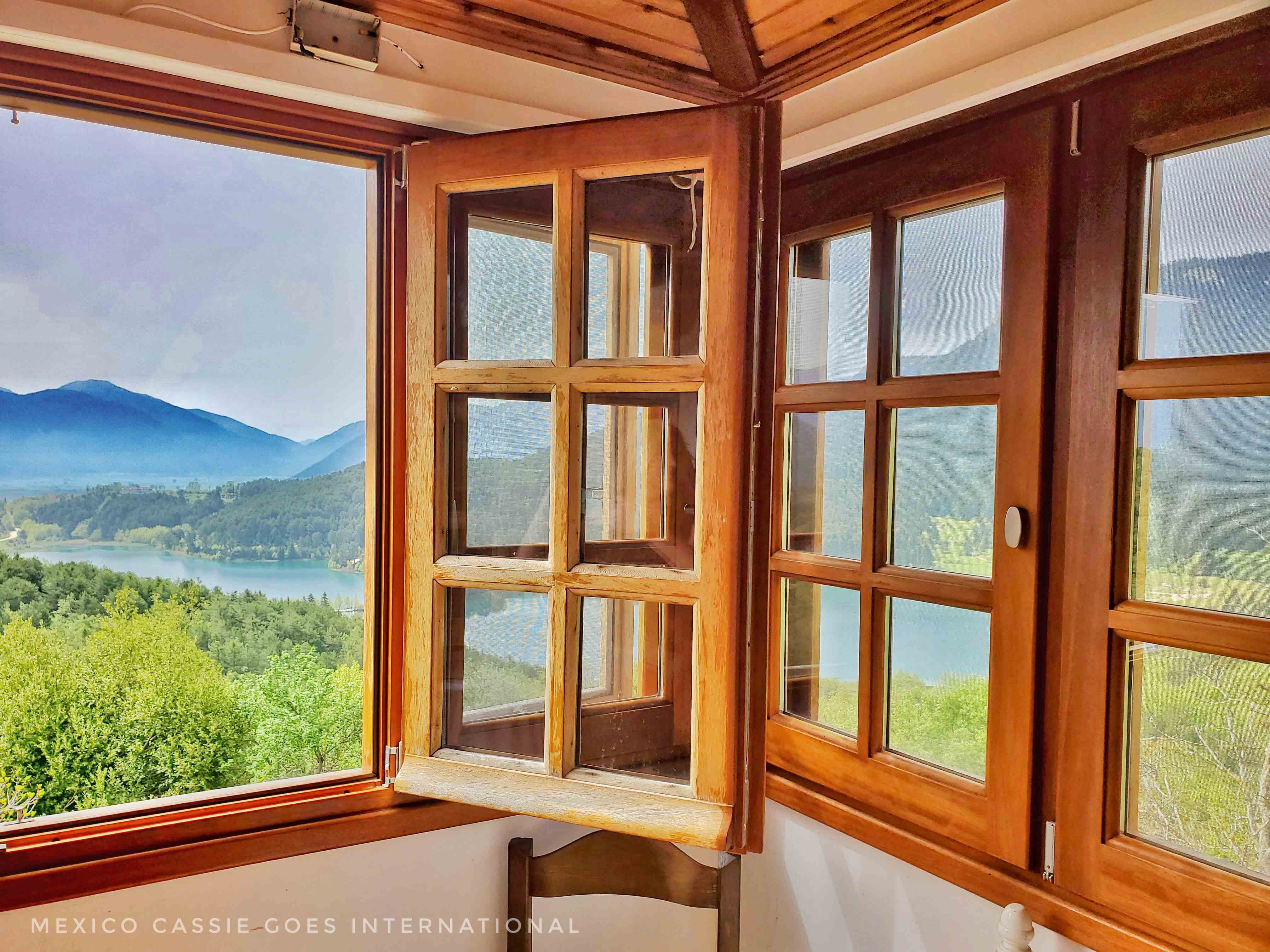
Up on a hill overlooking Lake Doxa is St Georgios Monastery. From here the views down to Lake Doxa will take your breath away – you just need to know that you have to walk through what feels like a monk’s living room to find the magic window! Be warned that on your way to find this view you will absolutely be accosted by monks wanting to feed you monastery-made rose-flavoured spoon-sweet.
Did You Know? Spoon sweet is a sweet preserve that is generally served on a spoon as a gesture of hospitality. The main ingredient should still be obvious within the preserve. You’ll find it across Greece and the Balkan region and it’s considered a snack, not a dessert.
Do not get so swept up in glorious views that you forget to enter the little chapel on the ground floor.
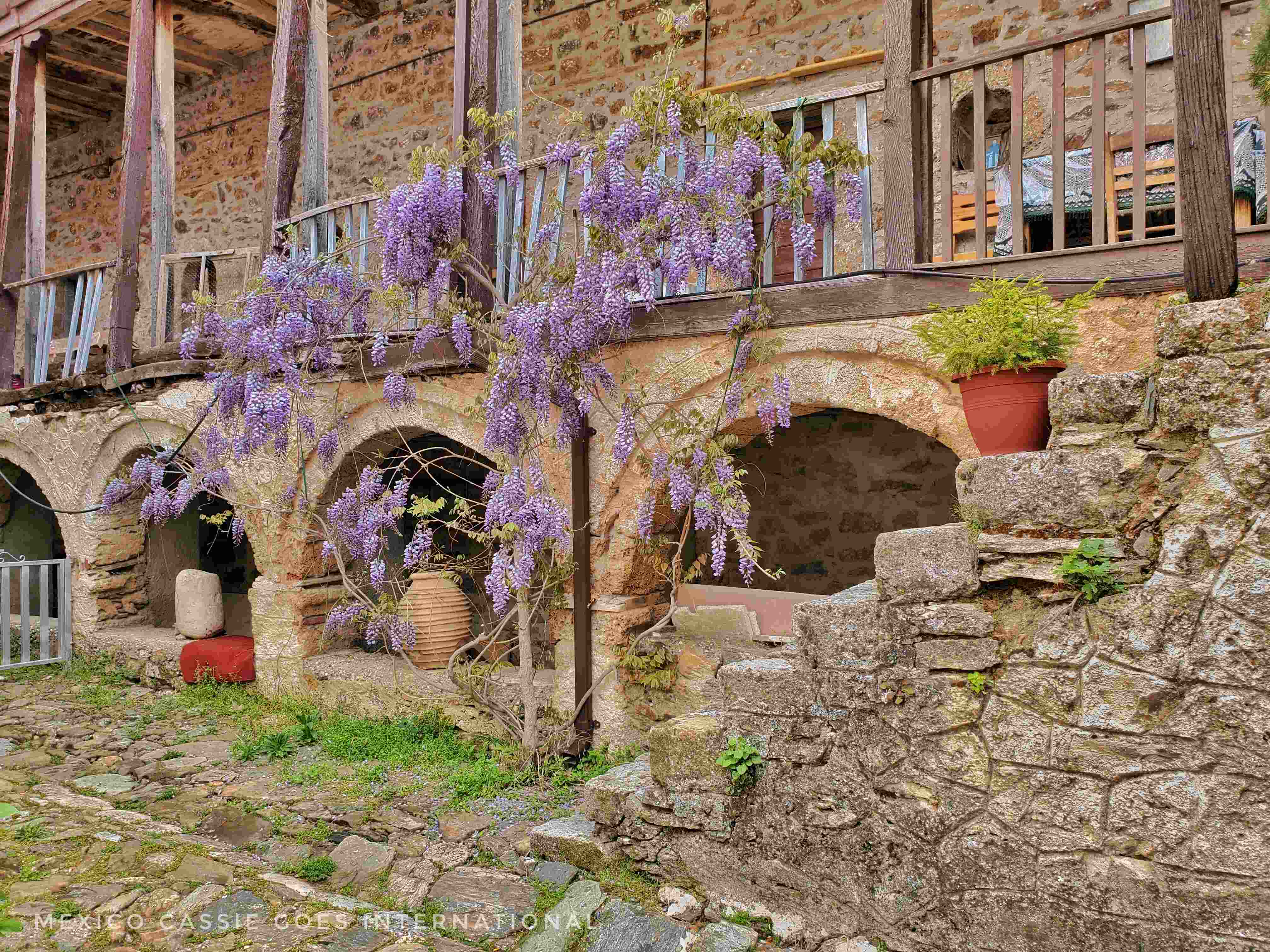
Mainland Greece: Explore Archaeological Sites
Thanks to the great road network across the Peloponnese, it is possible to visit a good number of archaeological sites whether you’re based in Xylokastro or Trikala or taking a Peloponnese road trip. If ancient history and Greek mythology are your thing then absolutely don’t forget to add an archaeological site to your list of places to visit. What might be easier, if you haven’t rented a car, is taking organised tours from Athens.
Consider the ancient ruins at Corinth, Nemea, Epidaurus, Olympia and Messini when you’re in the Peloponnese. The closest to Xylokastro and Trikala are Corinth and Nemea. I visited the archaeological site of Messini, which is just over two hours drive from Xylokastro and it was worth every single second of the trip.
When I return I plan on visiting more sites for sure.
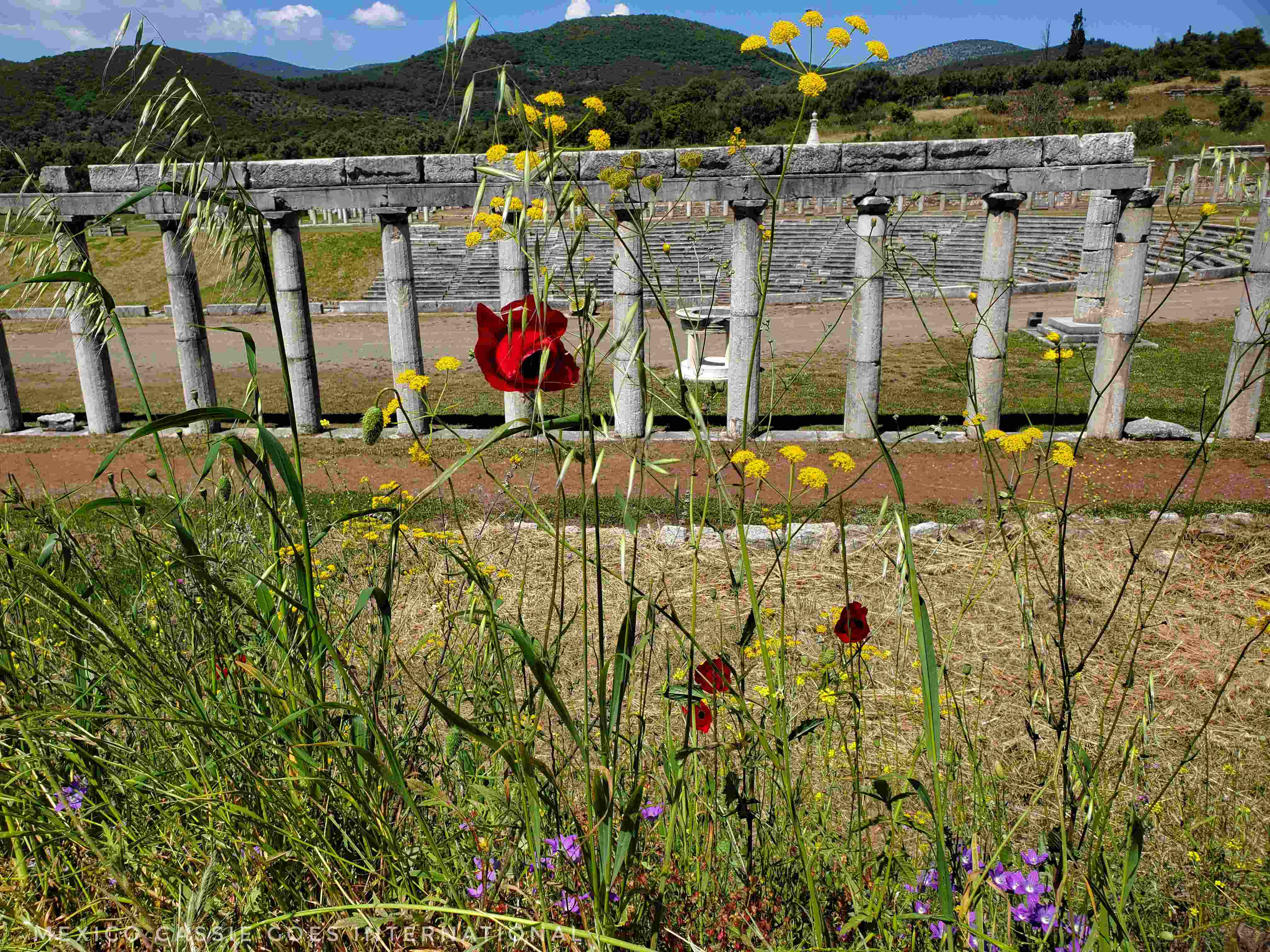
A Note on Eating and Drinking in Mainland Greece
Be prepared for the eating. Greek food is, of course, incredible and the Greeks like to feed people. I can tell you that I did not stop eating on this trip to the Peloponnese. I also came home and immediately started craving more Greek food. Greece broke me.
Here’s a little note on what you might expect:
Breakfasts: Bread, cheeses, meats, olives, eggs and salad, yoghurt, honey, fruit. And of course, coffee.
Lunches / Suppers: I found that there was a lot of meat placed on tables but that there were always dishes for vegetarians available. In this region of mainland Greece the food is very much “farm to table” fresh and healthy and absolutely is a Mediterranean diet. For vegetarians and vegans travelling around Greece, there are chickpeas, salads, spinach pie (so much pie) and beans.

Coffee: Oh do the Greeks love their coffee. They love to sit and sip and talk. A coffee that you or I might devour in five minutes can take a Greek person six hours to finish! Coffee is a ritual, a delight, a social moment. It’s traditional to drink cold coffee all year long. Try frappé (instant coffee with cold water and ice), freddo espresso (espresso with ice – remember to ask for no sugar if you don’t want it) or freddo cappuccino (cappuccino with ice).
Alcohol: There is no shortage of alcohol in mainland Greece. I was particularly (and happily) surprised by the quality of wine I found in the Xylokastro-Evrostini region of Greece. I learned, from Dmitris of Ktima Kissa Vineyard, that the Peloponnese region is the biggest and most important region for Greek wine and the Xylkoastro-Evrostini area is about to explode onto the world market. What makes it particularly special is the dramatic change in altitude – from sea level to 700m in a very small area, this acts as a natural air conditioning unit and preserves the acidity of the wines.
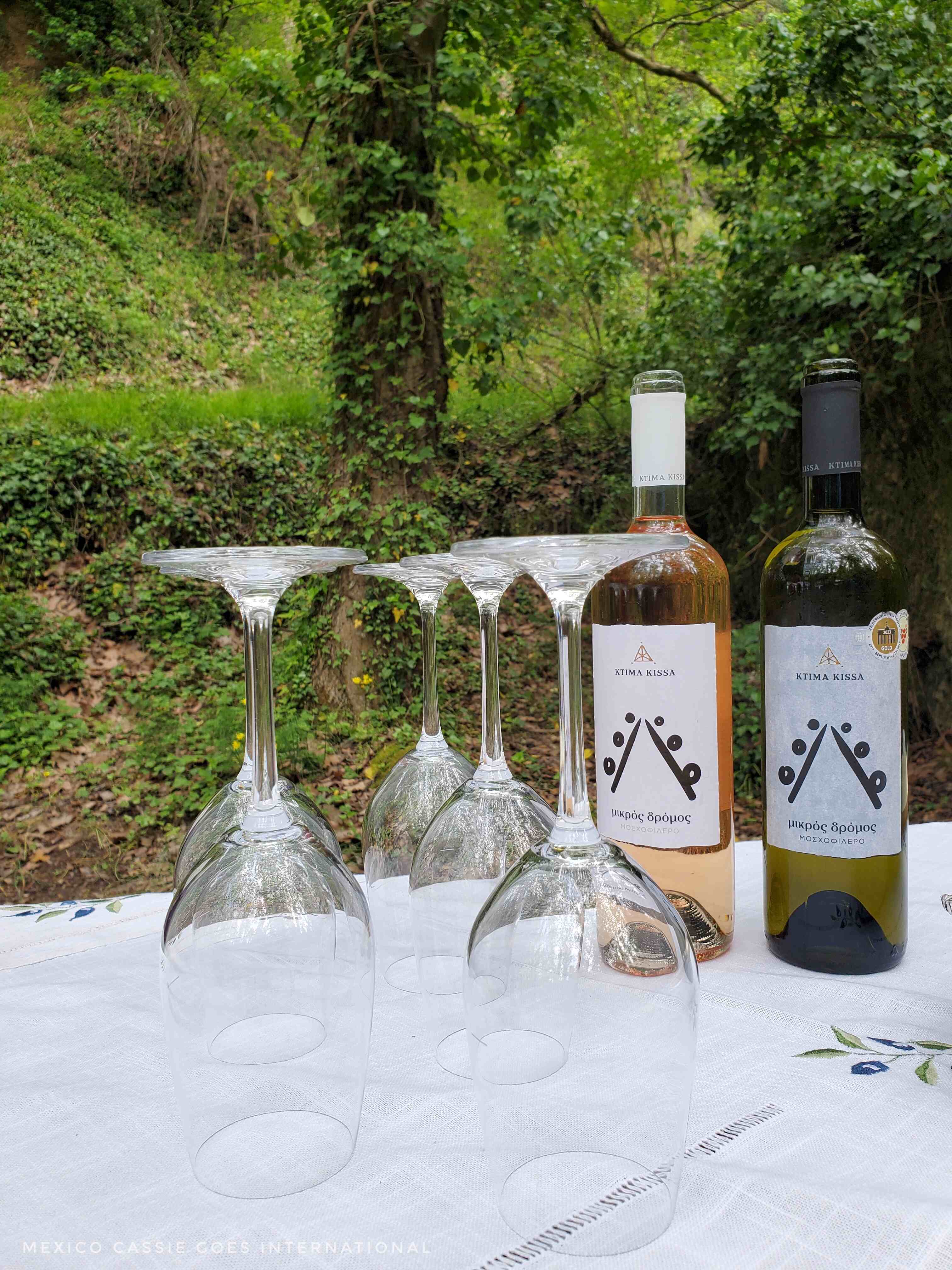
Of course, there’s also plenty of delicious local beer and ouzo to try as well as tsipuro, a traditional spirit that has been popular in Greece since the Byzantine period.
Mainland Greence FAQs
When should you visit Xylokastro-Evrostini?
Every season has something to recommend it in this region of Greece. Winter is for skiing and spectacular snowy vistas. Spring brings wild flowers and sunny days. Summer is for beach time and frolicking around lakes. Autumn is perfect for hiking and marvelling at the trees turning.
What are the typical souvenirs in Xylokastro-Evrostini?
Well, olive oil, super food corinth raisins, wine and honey would be my top picks. You could even bring home a small olive tree since there are smart people selling them with health passports! I was given one by PlantBox and got it home without any problem.
How many days do you need in the Xylokastro-Evrostini region?
You could easily spend three or four days in this region but a day trip from Athens will be a great start.
Do people speak English in Xylkokastro-Evrostini?
Some people speak English but not everyone. But for m, this is part of the charm of the region; you have to find ways to communicate when you’re in small villages. Google Translate, hand gestures and smiles go a long way.
What’s internet coverage like in Xylokastro-Evrostini?
It was pretty perfect everywhere I went. I can’t think of a single moment when I didn’t have full coverage.
I hope you can tell that I had an absolute blast exploring this authentic region of mainland Greece. Feel free to get in touch if you have any questions. I’d love to help you plan your trip to Xlokastro-Evrostini.
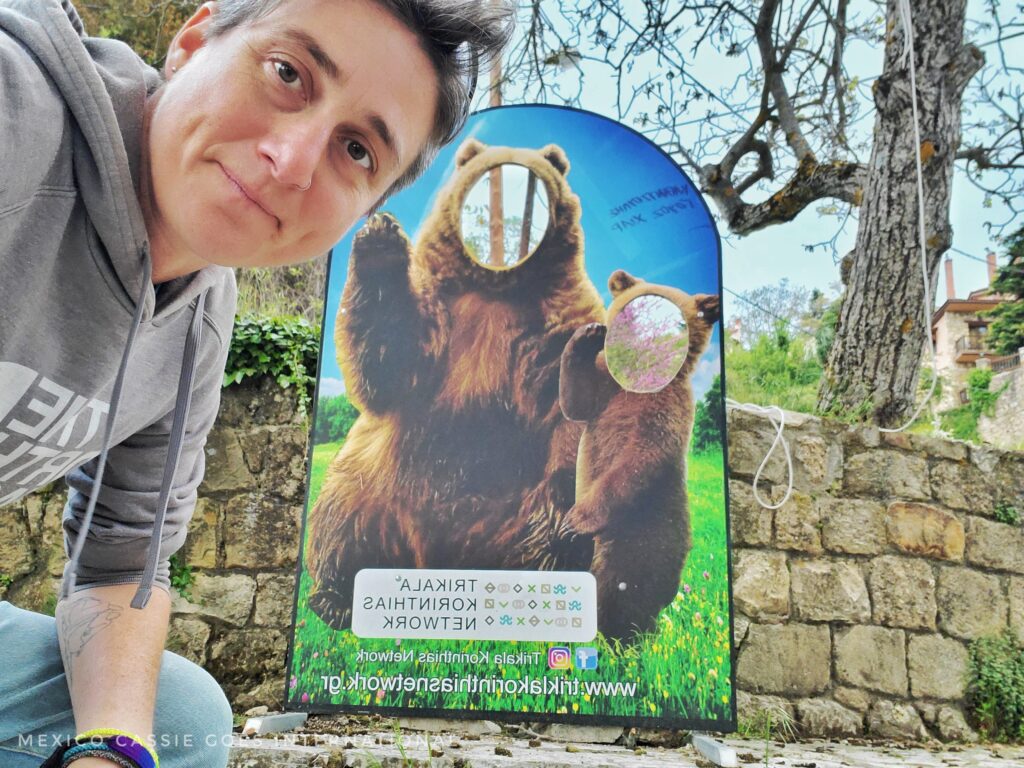
0 Comments